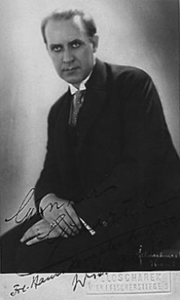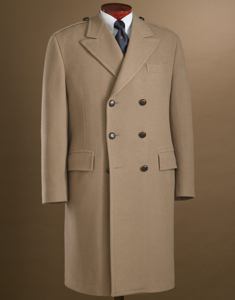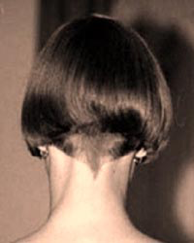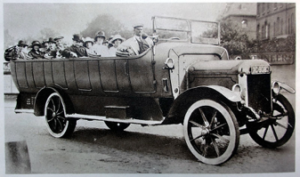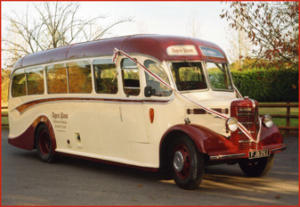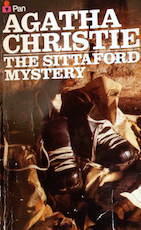
Poirot Score: 78
The Sittaford Mystery
☆☆☆☆
Reasons for the Poirot Score
Deserves a high score because it meets the cryptic crossword criterion – that although the solution is not obvious, if readers do solve it they will know they are correct. And it is a good read. The séance provides drama as well as cunning clues. But it is not from Christie’s top drawer. The motive is poor and some of the clueing, particularly around the missing boots, second rate. And the plot is a bit of a one-trick pony.
Click here for full review
Trivia
Sittaford setting
The novel is set in Devon, mainly on, or close to, Dartmoor, although the names of the towns and villages are fictitious. Christie was brought up in Torquay on the south coast of Devon. She knew Dartmoor well and finished writing her first novel, The Mysterious Affair at Styles, at the Moorland Hotel at Haytor towards the south-east of Dartmoor. The name, Sittaford, presumably came from Sittaford Tor in the centre of Dartmoor National Park although the village in the novel is widely believed to have been based on Belstone, at the northern edge of the Park. Exhampton, in the novel, is a thinly disguised Okehampton – a market town just north of Belstone. Dartmoor prison is not fictional. It is located within Dartmoor National Park near Princetown, where Conan Doyle is believed to have written The Hound of the Baskervilles. The prison was originally built in 1806 for prisoners from the Napoleonic wars.
Tristan and Isolde
“Robert Gardner was lying on a couch by the window in a big room on the first floor. He was a big man, blue-eyed and fair-haired. He looked, Emily thought, as Tristan ought to look in the third act of Tristan and Isolde and as no Wagnerian tenor has ever looked yet.” (Chapter 26)
At the beginning of the third act Tristan lies wounded, pining for Isolde.
It is surprising how few musical references there are in Christie’s novels. She had been a serious amateur singer with a good voice. Indeed at one time she had considered pursuing singing as a career. As a girl she had dreamed of singing the part of Isolde (see Laura Thompson, p459, chapter ‘God’s Mark’)
Gunna Graarud, the Norwegian tenor who sang
Tristram at Bayreuth in 1928 – the earliest recording
available of the opera. Presumably, for Christie, he
did not look the part.
[http://en.wikipedia.org/wiki/Gunnar_Graarud]
British Warm
“The Major was divested of his British warm, his gum boots and his aged scarf” (Chapter 1)
“The doctor was just sitting down to dinner with his wife and was not best pleased at the summons [to see the murdered man]. However, he grudgingly agreed to accompany them, drawing on an aged British Warm ..” (Chapter 3)
A British Warm is an overcoat that was developed during the First World War for military wear [see http://www.gentlemansgazette.com/british-warm/]. It is double breasted and traditionally made from a heavy woollen fabric called Melton cloth (after the town of Melton Mowbray in Leicestershire, now better known for its pork pies). As with some other military designs, such as the trenchcoat, it was adapted for civilian wear.
A British Warm overcoat
http://forums.army.ca/forums/
index.php?topic=16520.1675
The Shingle
“Then my impression of you as a high-spirited, beautiful girl”
‘Thank you’ said Emily
‘Shingled,’ went on Charles.
‘What do you mean by shingled?’
‘You are,’ said Charles.
‘Well, of course I am,’ said Emily. ‘But why mention it?’
‘Women readers always like to know,’ said Charles Enderby.
(Chapter 17)
Shorter skirts and even shorter hair was the fashion amongst the fast set of young women in the 1920’s. Bobbing the hair was cutting it short and from the mid-1920s a favourite bob cut was the shingle characterised by the hair being very short at the back, often cut in a V-shape, and lying flat to the head.
[http://www.hairarchives.com/
private/1920s.htm]
Charabancs
‘I shouldn’t think many motors come up this lane,’ said Emily.
‘Charabancs do in the summer time,’ said Captain Wyatt grimly.
[Chapter 18]
My mother used sometimes to say ‘charabanc’ in referring to what I would call a (motor-)coach, perhaps because for her parents’ generation charabancs were redolent of pleasant days out in the country. The word comes from the French char-à-bancs, a benched carriage and originally referred to a vehicle with seats looking forwards. The Oxford English Dictionary gives Byron’s journal as the first use of the word in English in 1816 (spelt with hyphens as in French) at a time when it referred, of course, to a horse-drawn vehicle. The term sounded distinctly old-fashioned in England by the 1950’s when I was growing up, despite my mother’s usage.
[The pictures show motorised charabancs from the 1920s and late 1940s – when the term was going out of general use. The 1940s photo is from http://agespast.co.uk/bedford.phtml
And the 1920s from http://en.wikipedia.org/wiki/Charabanc ]


